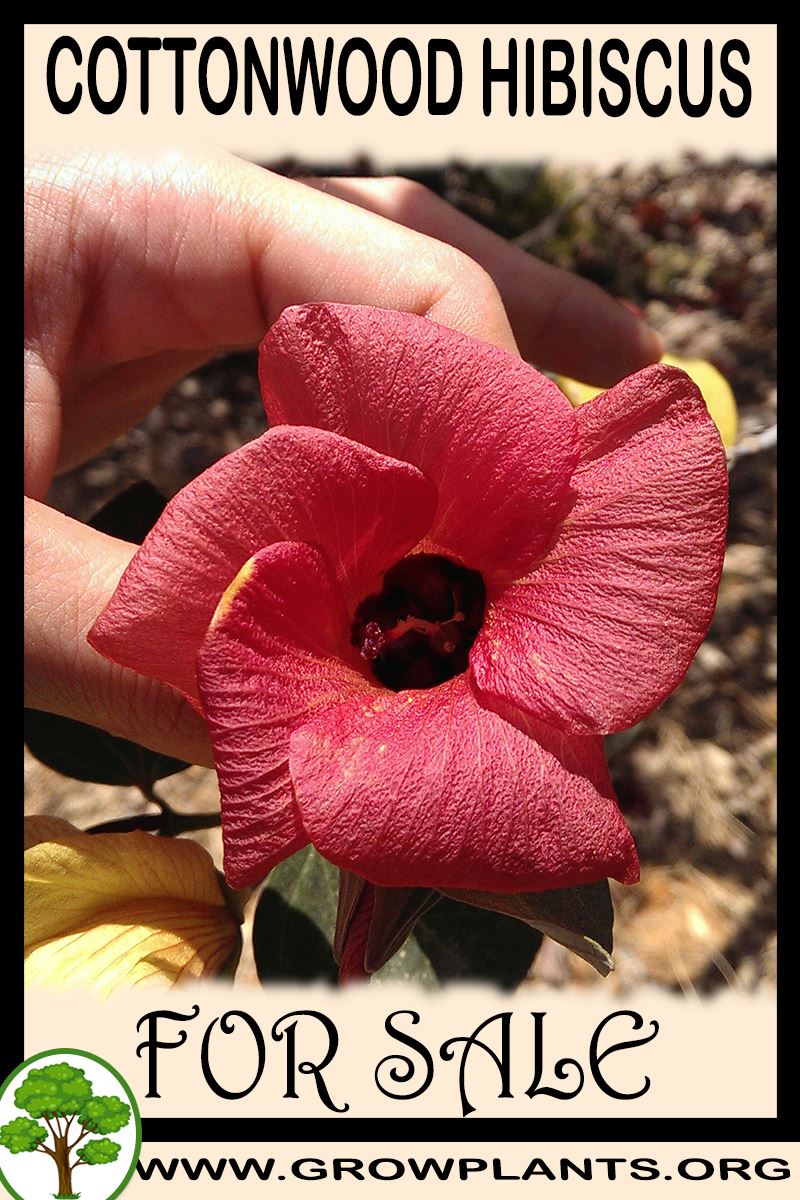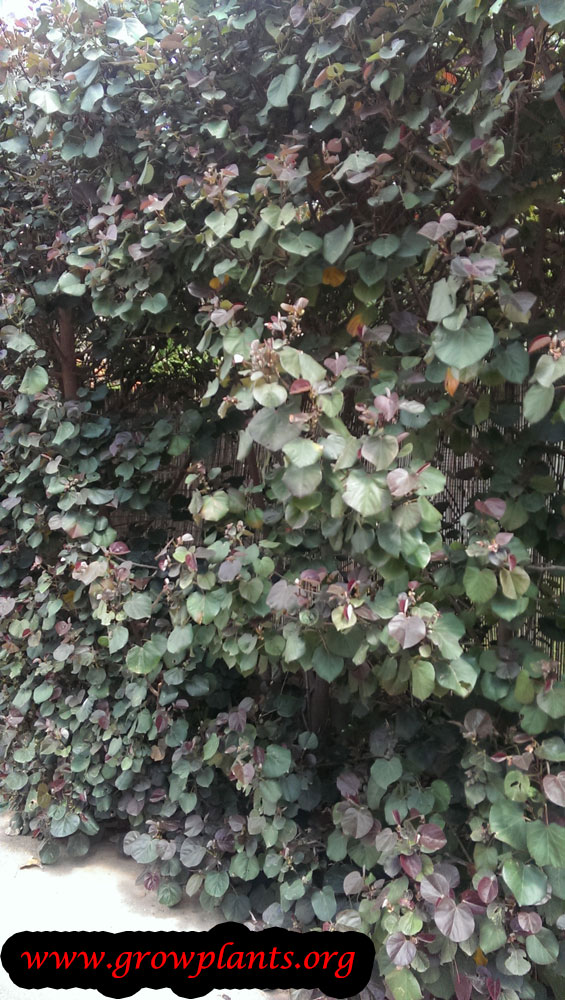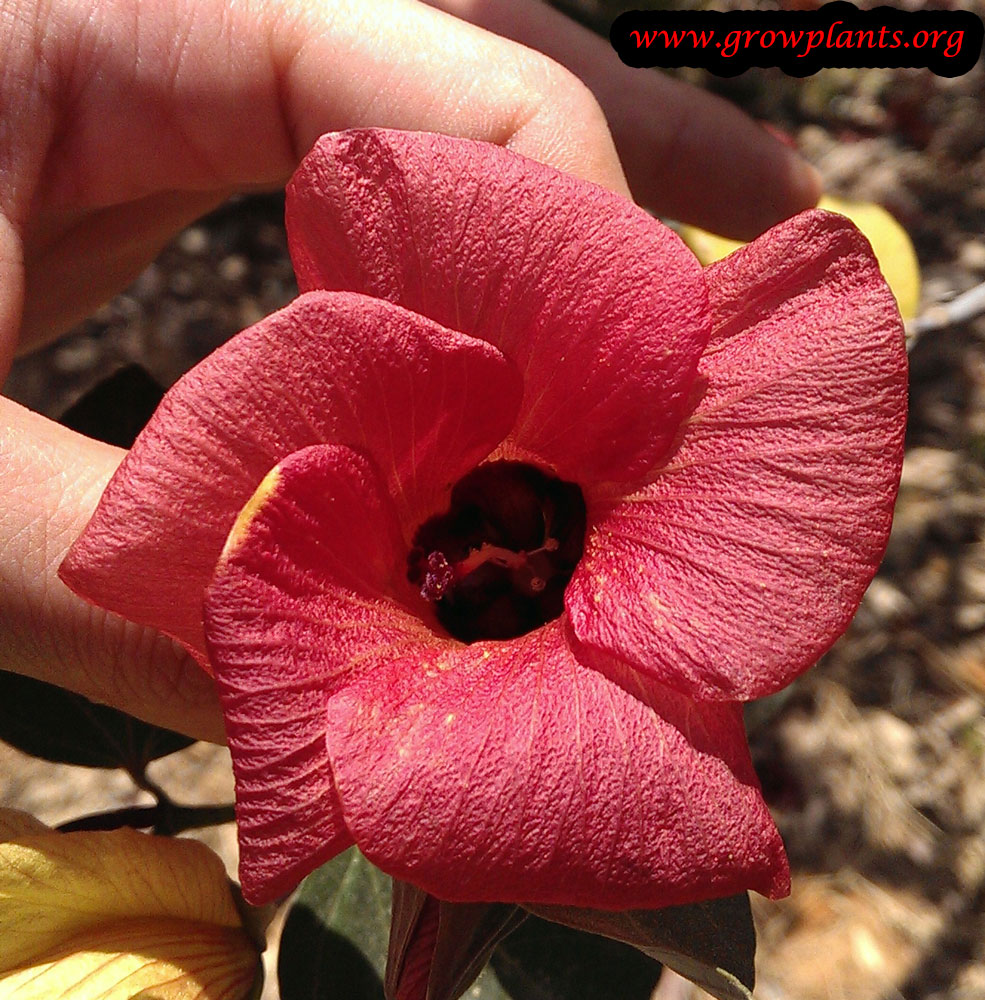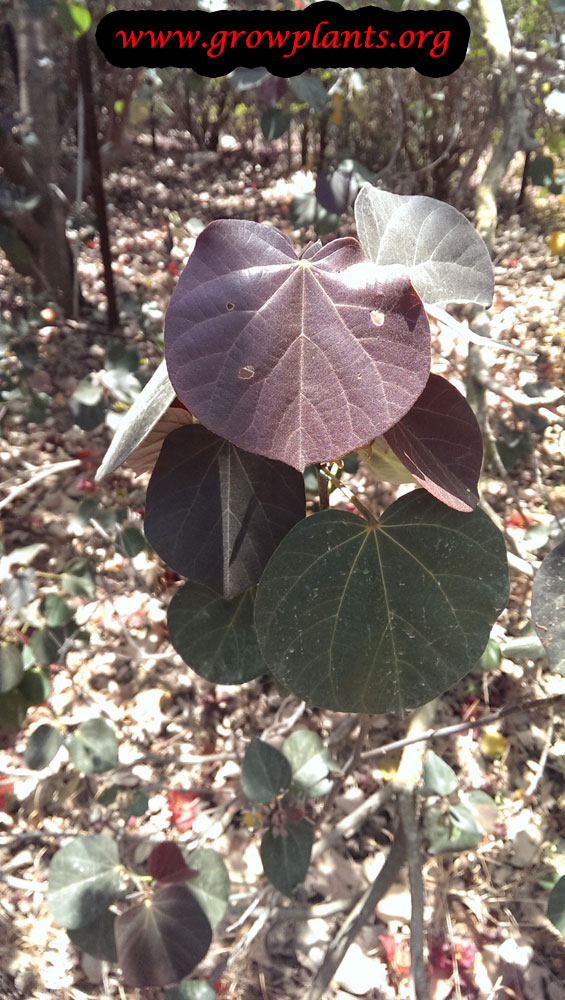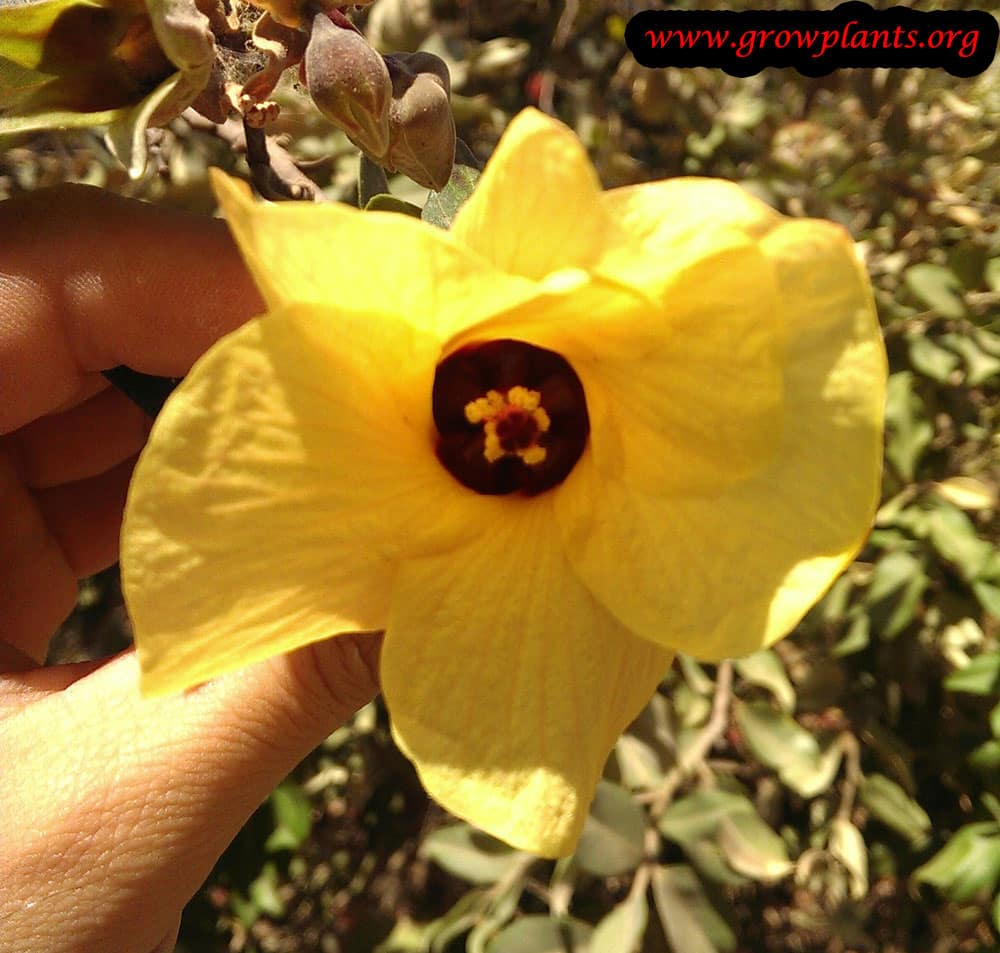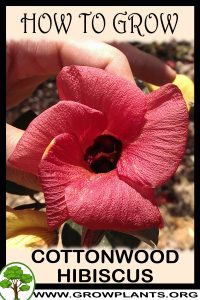
Cottonwood hibiscus grow and care – small tree or shrub of the genus Hibiscus also known as Sea hibiscus or Hibiscus tiliaceus, Cottonwood hibiscus perennial evergreen plant, grown for the edible leaves, grow mostly as ornamental plant and as hedge plant, but also grow for edible leaves, flowers, bark and roots also can use as medical and fragrant flowers and can be bonsai tree, can grow in tropic, mediterranean, subtropical climate or indoor as houseplant and growing in hardiness zone 10b+ and with the right care in hardiness zone 10a.
Cottonwood hibiscus edible leaves and flowers
Leaves edible the color can be: green, red, white the leaves can be variegate, the leaf in heart shape.
Flower edible and fragrant the color can be yellow and after become mature the color changed to red.
Root and bark also edible.
Cottonwood hibiscus for sale – Seeds or Plants to Buy
How to grow Cottonwood hibiscus growing and care:
Sandy, well-drained soil, rich soil, organic matter, mulch, moist soil
How to care:
Add fertilize at least once, put mulch to keep the soil moist, organic matter and humus, prune once a year
How to care:
Add fertilize at least once, put mulch to keep the soil moist, organic matter and humus, prune once a year
What is the best way to start growing?
Plant / Seed / Vegetative Reproduction – cutting
How to propagate by cutting:
Propagating by cutting better to start in the early spring or with temperature of 20-26C (68-79F) and better before the plant start to grow after the dormant, better to choose stems that not going to bloom, requirements: moist soil, high humidity, peat soil, hormone for root growth, highly recommend to use green house (or small plastic box with holes) it will take few weeks.
Is it necessary to graft or use vegetative reproduction?
No, easier to start by seeds, but when it’s grow from cutting it’s faster
Difficulties or problems when growing:
Invasive, agressive
Recommended planting season?
Winter, spring, simmer (in hardiness zone 10b better not in the summer and better in the winter to early spring)
How to plant:
Dig hole bigger 50% more than the roots ball, add to the hole, organic matter, dead leaves and hummus put back some soil and mix it, after this put the plant cover lightly but strong enough that won’t fall put support for the plant if needed, if the plant is not stable consider to prune, water it twice in the first day and every day for two weeks, in winter no need to put a lot of water and need to wait for the spring to put everyday water, and in the summer need to put big amount of water until the plant growing at least 5 new leaves.
Pests and diseases:
Nematode, galls, aphids, mealy bugs
Pruning season:
End of the autumn to winter
How to prune:
Just for design, dead part and inner branches that not blooming
Difficulties or problems when growing:
Invasive, aggressive
Recommended planting season?
All year in hardiness zone 11b, spring to autumn hardiness zone 10b-11a, spring to summer in hardiness zone 10a
How to plant:
Dig hole bigger 50% more than the roots ball, add to the hole, organic matter, dead leaves and hummus put back some soil and mix it, after this put the cover lightly but strong enough that won’t fall put support for the plant if needed, if the plant is not stable consider to prune, water it twice in the first day and every day for two weeks put water more than the regular, better to add the fertilizer after the plant establish.
Pests and diseases:
Aphids, mealy bug
Pruning season:
All year
How to prune:
For design and dead parts, for tree when young need to prune all the side branches or shrub need to prune the top of the main trunk in order to induce more side branches
Pruning as hedge plant:
When growing as hedge plant need to prune it in the top that will grow more one the side, in order to keep the plant full and not empty from the inside need to prune the stems and try to expose them to light.
Size of the plant:
3-10 m, 10-30 feet
Growth speed in optimal condition growth rate:
Fast growing / Medium growing
Water requirement:
Small amount of water / Average amount of water
Light conditions in optimal condition for growing:
Full Sun – bloom well and / Half Shade / Full Shade with light
Is it possible to grow indoor as houseplant?
Yes, when grow indoor need to verify that there is enough light
Growing is also possible in pots, planter, flowerpot or containers:
Yes, when growing in container need 50% bigger than the roots ball, every time that switch the container to bigger switch some of the soil to new soil until arrive to the desirable container size, after that every few years better to switch part of the soil and cut some roots, no need to take the plant out just from the side of the container, can grow in container of 20-50L (4-10 gallons) can grow in bigger and when grow as tree better bigger container, soil can be potting soil, mixture of peat soil and perlite or other light mixed soil, water it regularly and care when put bottom for the pot be aware not to let the water stay there too many days, need to add humus, organic matter, fertilizer and mulch to cover the soil to keep it moist.
Hibiscus tiliaceus bonsai:
Bonsai tree care need to take and prune from the top the stem and roots
Blooming information
Bloom season:
Spring / Summer
General information about the flower
Yellow flowers and after become mature the color changed to red
Pollination is done by:
Bees
Uses of Cottonwood hibiscus flower:
Raw, cooked
Edible leaves
Leaves harvesting season:
All year
How to harvest the leaves?
After it’s establish cut freely, take care to cut with the stems
Information about leaves:
heart shape leaf in color green, red, white the leaves can be variegate
Uses of Cottonwood hibiscus leaves:
Raw, cooked, stuffed
How to grow Cottonwood hibiscus – Hibiscus tiliaceus seeds
How to grow Confederate rose from seeds
Sowing requirement:
Moist soil, 20-26C (68-82F), humidity, full sun and possible in half sun, better in peat soil with vermiculite possible in other soils, care the soil won’t dry
Saving seeds and care until sowing:
Dry and dark location, keep it room temperature
Sowing season:
Spring will be the best for the tree but possible in summer, and in hardiness zone 12+ possible all year
How to plant:
Plant in soil that stay moist and don’t let the soil dry
Planting spacing:
3*5cm to transplant and better not to transplant it before 5 leaves, direct it’s depend 2*2m (80*80)
Depth of Sowing:
0.5-1cm (0.25-0.5 inch) but cover lightly and don’t push
Conditions for seeds germinate:
Full sun, moist soil, water regularly and don’t let it dry
Watering requires for Seeds:
Average amount of water / Big amount of water
Germination time:
2-6 weeks
Condition of seedling:
After five leaves possible to add fertilizer and to put mulch, sunny location, humidity and moist soil
Scientific name:
Hibiscus tilliaceus
Categories
| Blooming Seasons |
|
|---|---|
| Edible Parts |
|
| Culinary uses |
|
| Flower colors |
|
| Climate |
|
| Harvest Season |
|
| Leaf color |
|
| Ornamental parts |
|
| Plant growing speed |
|
| Plant life-form |
|
| Plant Uses |
|
| Planting Season |
|
| Plants sun exposure |
|
| Watering plants |
|
| Hardiness zone |
|


